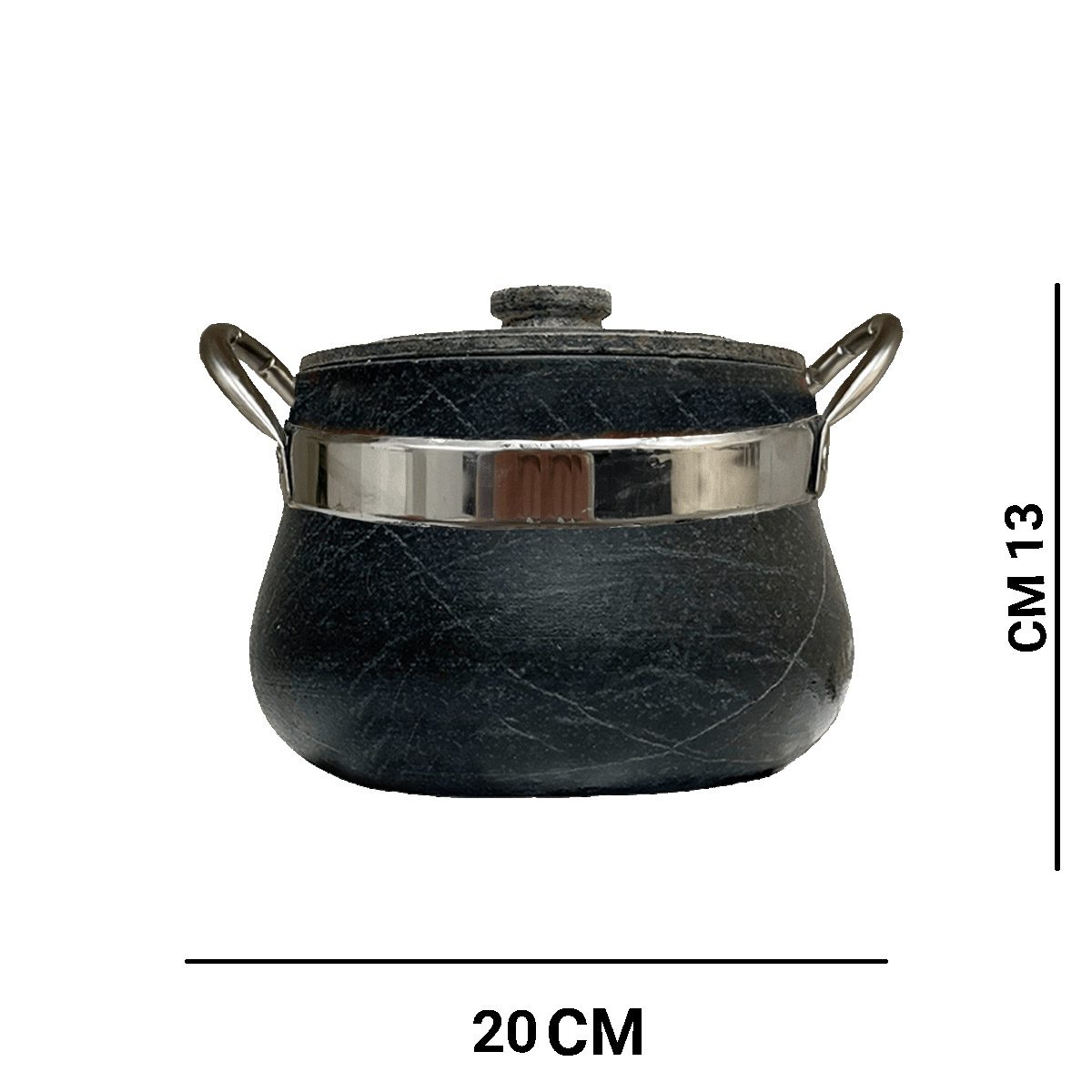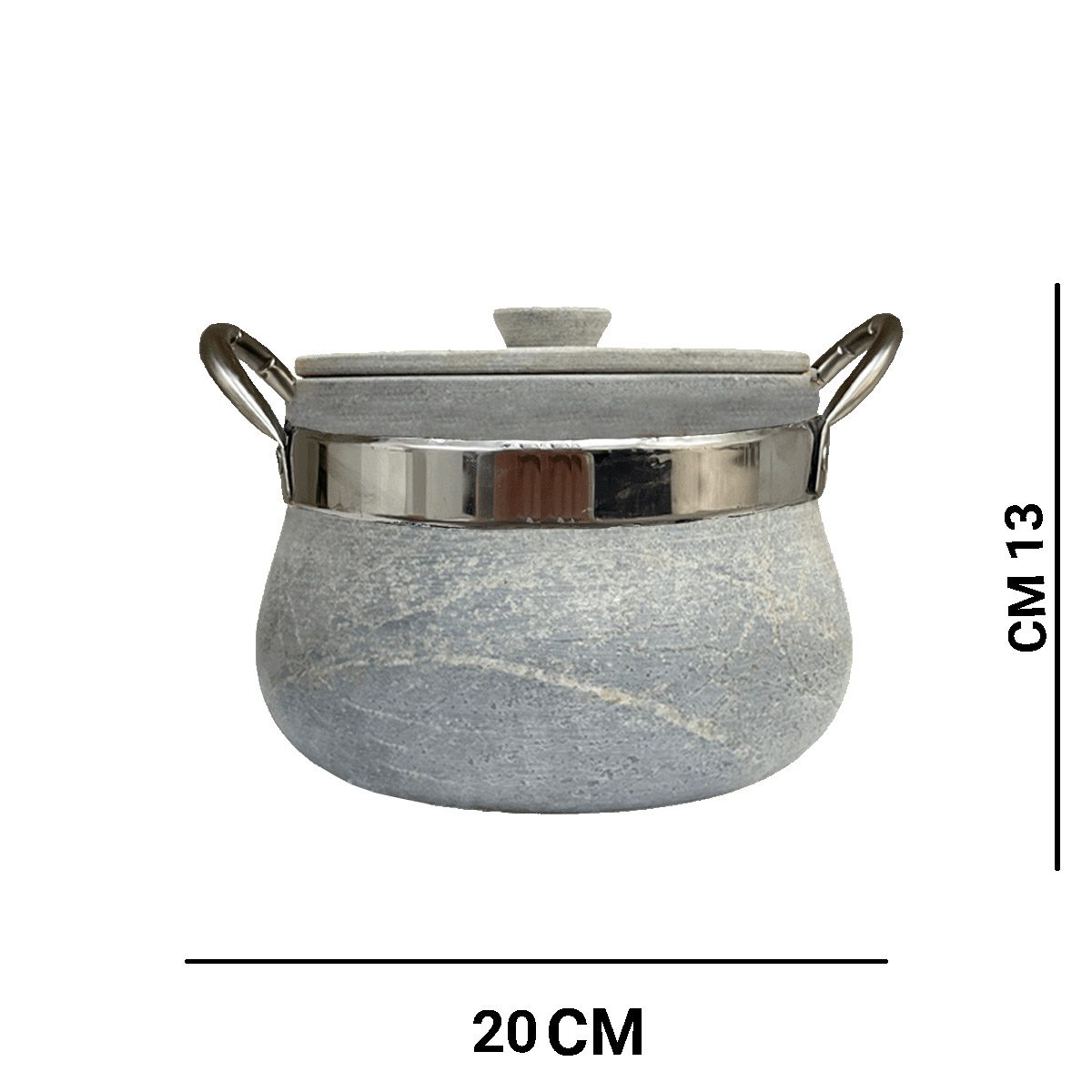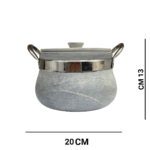What Material Are Stone Cooking Pots Made Of?
Stone cooking pots have been used by humans for thousands of years and are now considered one of the healthiest and most natural cookware options worldwide. These pots are made from a metamorphic rock called Talc Schist, commonly known as Soapstone. Due to its softness and excellent malleability, soapstone is ideal for crafting durable and food-safe cooking vessels.
Historical Significance and Origins
Research indicates that soapstone is only found in limited regions worldwide. One notable location is the holy city of Mashhad, Iran, particularly in the Hezar Masjed Mountains. Stone cookware has been used in this region for millennia. In 1974, a joint expedition by Iranian and French archaeologists uncovered 60 stone tools near Mashhad, dating back 800,000 to 1 million years, marking the earliest evidence of tool-making humans in Iran and Southwest Asia.
Historical accounts also mention that Imam Reza (peace be upon him), the eighth Shia Imam, visited this region around 1,200 years ago. He blessed the mountains near Sanabad, where stone pots were made, instructing that only these stone vessels should be used for preparing his food (Kitab Uyoon Akhbar al-Ridha, Sheikh Saduq, Vol. 1, p. 147).
Royal Stone Cooking Pot (Dizi Stone Pot)
The Royal Stone Cooking Pot, also called the Dizi Stone Pot or Stone Casserole, is crafted from a single piece of soapstone and comes with a steel handle.
Key Features:
- Single-piece construction with no cracks or defects
- Made from soapstone sourced from Hezar Masjed, Mashhad
- Ideal for stews, soups, ash, and other liquid-based dishes
- Suitable for 4–5 people
- Rich in iron, silica, and minerals
- CNC-crafted design for durability and elegance
- Safe for stove and oven use
- Typically shipped unseasoned; can be oiled before first use
Benefits of Stone Cooking Pots:
- Energy Efficient: Gradual heat absorption reduces energy consumption, prevents rapid evaporation, and preserves essential nutrients.
- Enhanced Flavor: Stone pots improve the taste of foods; smooth surfaces prevent sticking and are easy to clean.
- Faster Cooking: Functions like a pressure cooker without risks; meats and stews cook evenly in approximately 2 hours over moderate heat.
- Easy Cleaning: High-density stone resists bacteria; minimal detergent needed. Can be cleaned naturally with water, vinegar, or mild soap.
- Health Benefits:
- High iron content helps prevent anemia
- Silica strengthens nails and joints
- Minerals enrich food nutrition
How to Prepare and Use a Stone Cooking Pot:
- Coat interior and exterior with lard or olive oil.
- Leave in a warm area for three days to fully absorb the oil (sunlight or near a heater works).
- Wash thoroughly before first use.
Usage Tips:
- Avoid frying or sautéing; use for stews, soups, and other liquid dishes only.
- Cook over moderate heat; add only boiling water if needed.
- Do not place directly on an open flame—use a heat diffuser.
- Handle carefully to prevent cracks.
- Avoid sudden temperature changes.
Repairing Cracks:
Method 1: Fill the pot with water, add 1 tbsp turmeric, 1 tbsp starch, 1 tbsp tomato paste, and 250g lard. Simmer gently for 10 minutes, let cool, then wash.
Method 2: Mix egg white with lime to form a soft paste. Apply to interior and exterior cracks, let dry, wash, and reuse.
Stone cooking pots combine ancient tradition, natural materials, and modern craftsmanship, offering a safe, flavorful, and nutritious cooking experience.






Reviews
Clear filtersThere are no reviews yet.